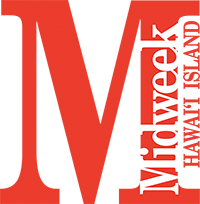The Gift Of Glass
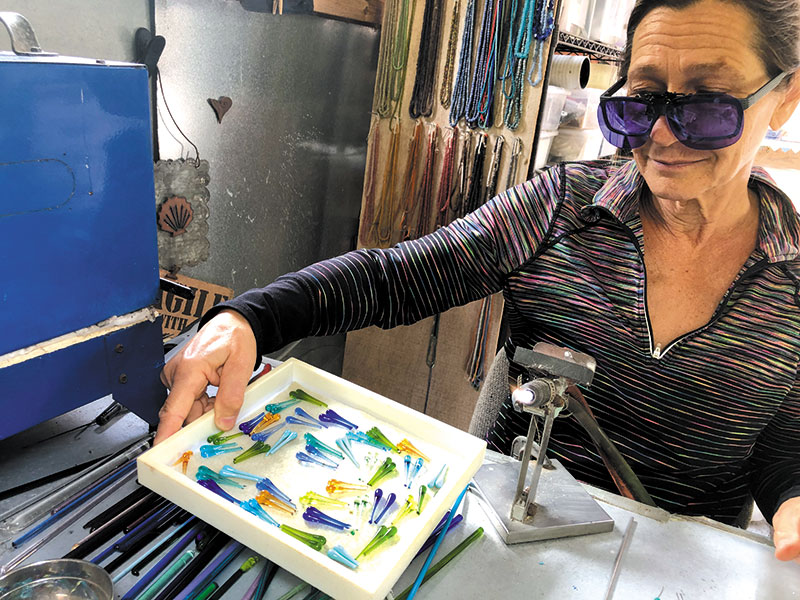
Stacey Siegel has a knack for using glass torchwork to make intricate beads.
Glassblower Stacey Siegel does it all, from miniature perfume bottles and vases to tiny beads and unique pieces of jewelry.
In a country studio surrounded by lush tropical gardens and mature fruit orchards, petite Stacey Siegel creates delicate works of art from the glass she blows or torches herself. Whether custom glass beads, miniature perfume bottles or delicate iridescent vases, Siegel has always specialized in a type of glassblowing that most don’t practice.
“I love small; I am small,” she says with a laugh. “I’ve always loved and collected miniatures, ever since I was a young child. So, as a glass-blower, I was very unusual because I blew ‘small.’ No one blows small. It’s just not considered cool. Most glass blowers blow large … and then even larger. The larger the better.
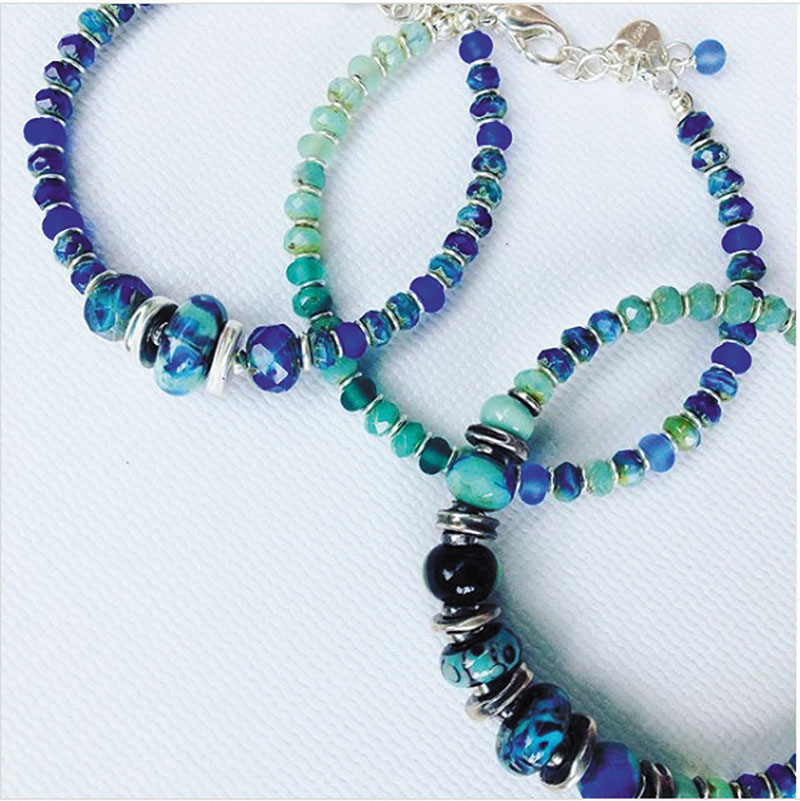
Siegel creates everything from bracelets to miniature vases to earrings with glass she blows herself.
“To do that kind of glass blowing, they have to have a hot shop, which is a furnace set up with a porcelain crucible that holds molten glass, heated to 2,400 degrees, at the ready 24/7.”
Such a hot shop is impractical and prohibitively expensive (more so on Hawai‘i Island, where there is no natural gas), and especially because Siegel needed to be mobile with her setup. She developed a special process and designed low-overhead equipment that works for her particular needs.
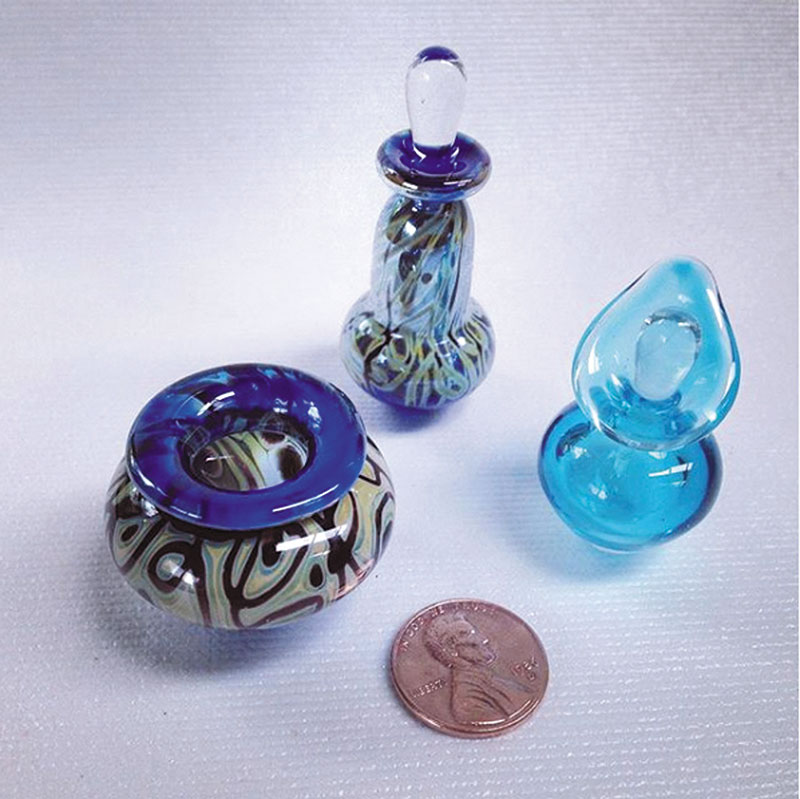
“I created a smaller form of glassblowing because I did miniatures,” explains Siegel.
“It’s very nontraditional, but I use glass rods that I can put in the warming kiln (a place to hold molten glass) at a certain temperature. Then, I can pick up the glass and transfer it straight into the ‘glory hole,’ which is the glassblower’s nickname for the small reheating furnace where the glass piece is fabricated. Unlike the large hot shop furnace, all equipment can be turned off at the end of day, so it is not using gas at all times.”
The idea for the small footprint, glassblowing setup was a case of “necessity is the mother of invention.” The mother, in fact, being Siegel herself.
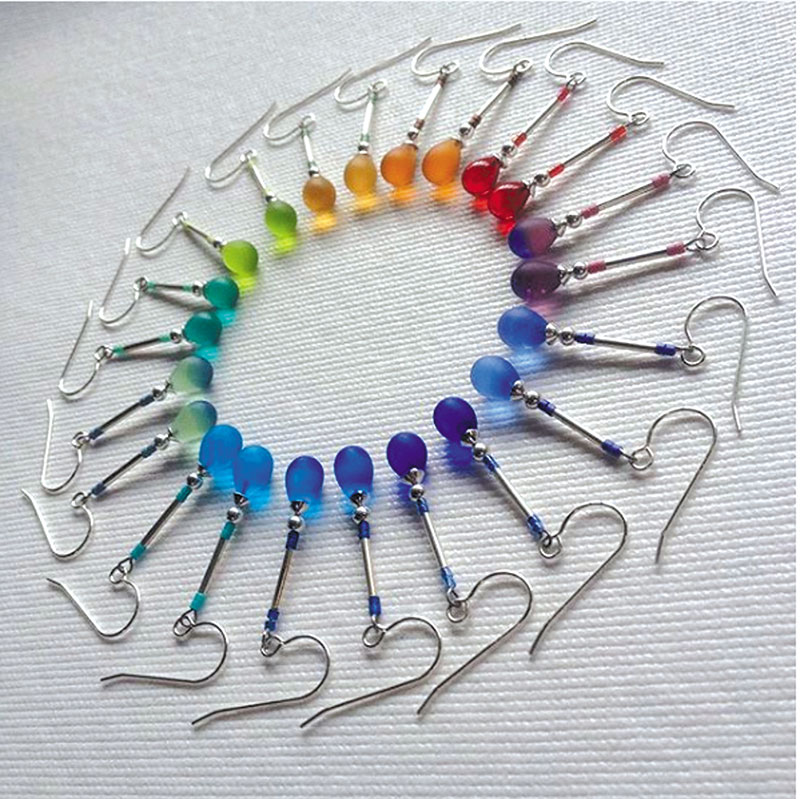
“I was working in a glass studio and gallery in Santa Fe, New Mexico,” Siegel recalls. “In exchange for working in the gallery, the owner taught me how to blow glass. I actually had to work my way up from 15 minutes, to 30 minutes to two hours … And then I got pregnant with my daughter and realized that to continue, I needed to build a small hot shop of my own and be more self-sufficient. So, I built and miniaturized my equipment, with the help of friends. Instead of having a furnace with molten glass in it, I made my own glass bars and used pieces of the bars to start my blowing process.”
She created a stunning line of miniature perfume bottles and vases and built up a business selling the pieces to galleries nationwide.
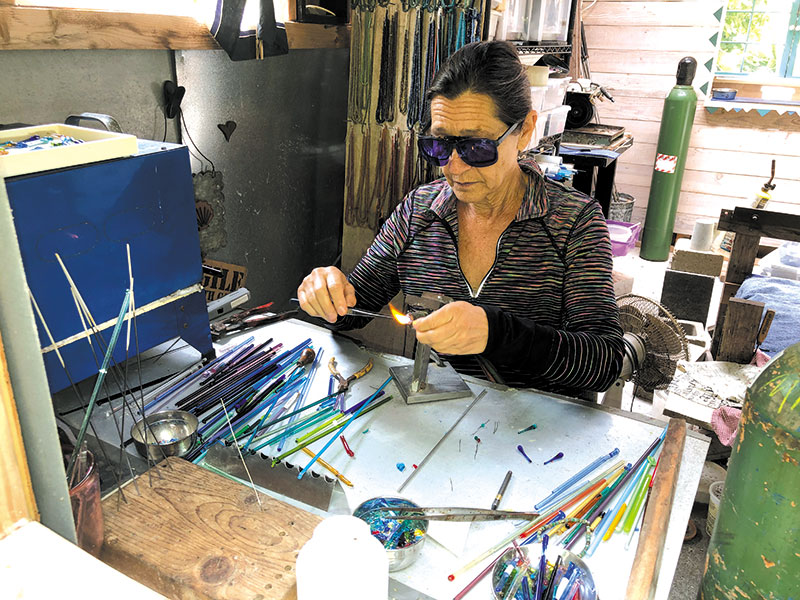
Glassblower Stacey Siegel uses a portable hot shop that she created herself.
After about 12 years in Santa Fe, Siegel met her husband, who lived in Hawai‘i but was visiting a friend of the gallery owner. In 1994, she decided to join him and moved the setup to Hawai‘i Island to continue her artistry here. If she were a “normal” glassblower, that prospect would be quite daunting.
“Because I had already downsized my shop, I packed the entire studio — annealer, tools and equipment — inside my truck and shipped it all over,” she says. “The portability of the system allowed me to keep going anywhere, and I finally found a source for my glass rods here. The portable setup really suited me. I don’t really know anyone who did what I did. I was outside the norm. That’s because as the glassblowing world was going bigger and bigger, I was going smaller and more delicate.”
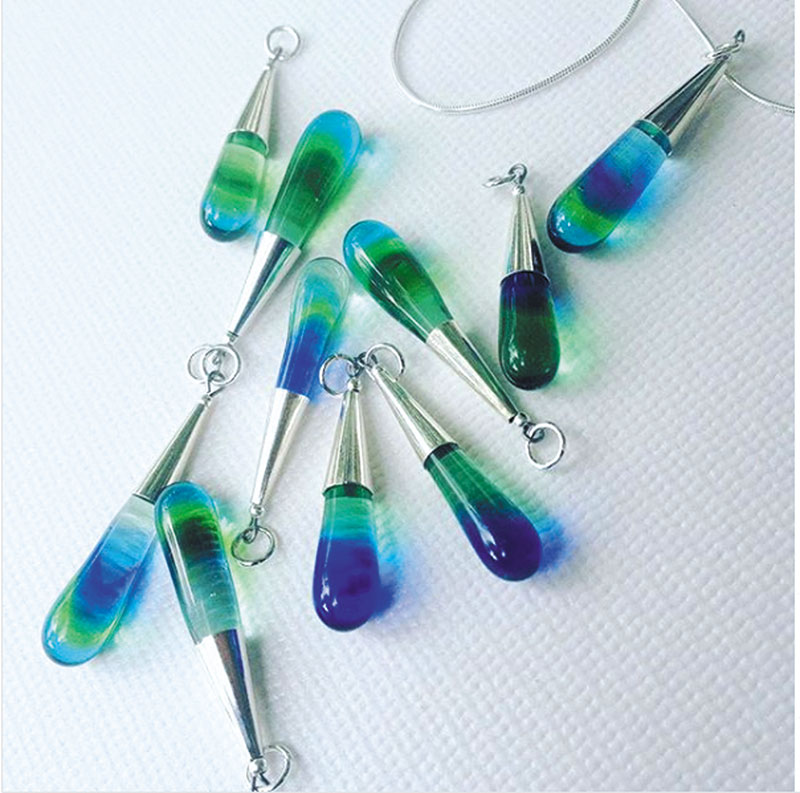
With her tiny setup, Siegel crafts beads and pendants for jewelry, as well as tiny vases.
Selling wholesale, she established lots of regular accounts and gained some notoriety for her beautiful miniatures. As the years passed, Siegel wanted to try something different and began moving more toward doing glass torchwork, which is the art of using a torch to create glass beads.
Beadwork wasn’t new to her. As an artist in Santa Fe, Siegel had begun her career as an artist with seed-bead weaving, which is a Native American tradition.
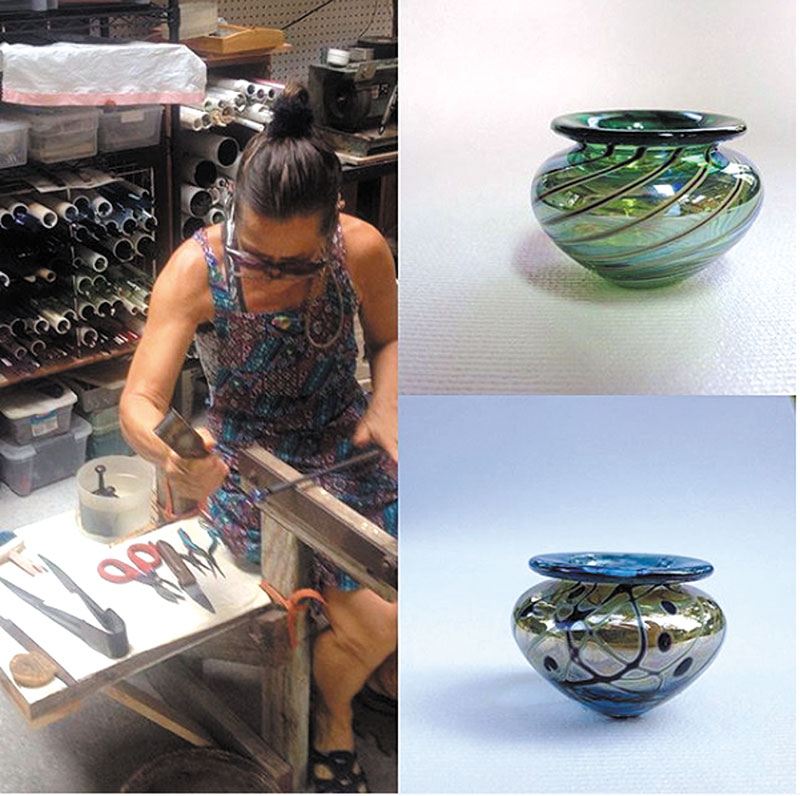
“The Southwest Indians used seed beads to make pouches and clothing,” she says. “I loved the culture and process of beading. Beads were my first passion.”
These days, making jewelry from the beads she fabricates gives Siegel and her husband the flexibility they need to travel, especially now that she has a grandson on the mainland.
She’s not tied down to glassblowing, which requires much more time, focus and commitment. Blowing glass can be physically taxing, too, and after 30 years, she wanted a little break.
Self-taught in all areas of jewelry-making, Siegel has also done silversmithing, wire bending, acid etching, flat glassing, and glass slumping and fusing. She’s also created her share of “cold” glass work, including stained glass pieces.
“I’ve experimented a lot in the glass world; I love to look at something and figure out how it was made,” she says.
Glass artistry isn’t the only South Kona product Siegel is involved with either. In addition to tending 5 acres of commercial oranges, Meyer’s lemons and Sharwill avocados with her husband, Siegel also volunteers at Blue Sea Artisan artist’s co-op and wholesales her collections at Cliff Johns Gallery, Volcano Art Center, Elements and online. She finds interacting with customers and sharing her love of art provides the antidote for the solitude that many artists experience as they create in the studio.
And in the end, she finds nature especially inspiring, helping her to focus on simplicity in design and production.
“I love being out here in the middle of nature,” she says. “I have my privacy and can create without a lot of disruption. I’m all about easy and simple. I love to keep life simple.”
To see more of Siegel’s work, visit instagram.com/staceysiegelglass.
